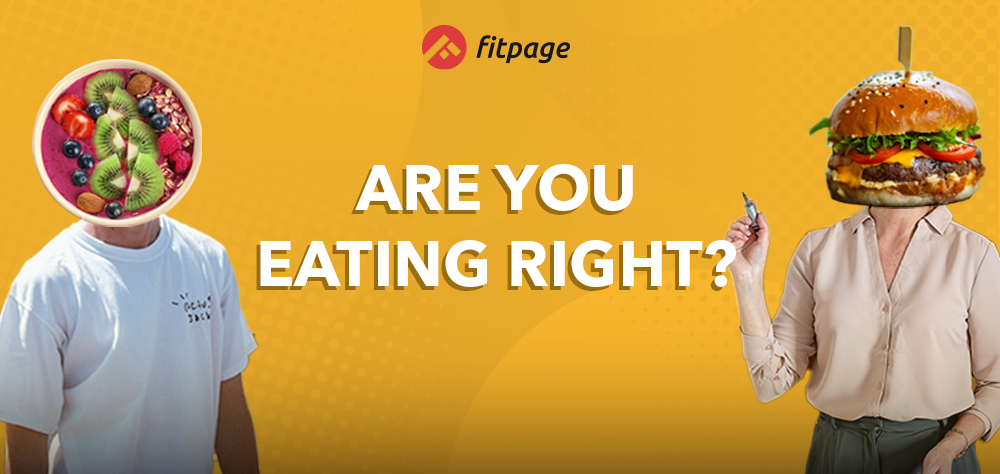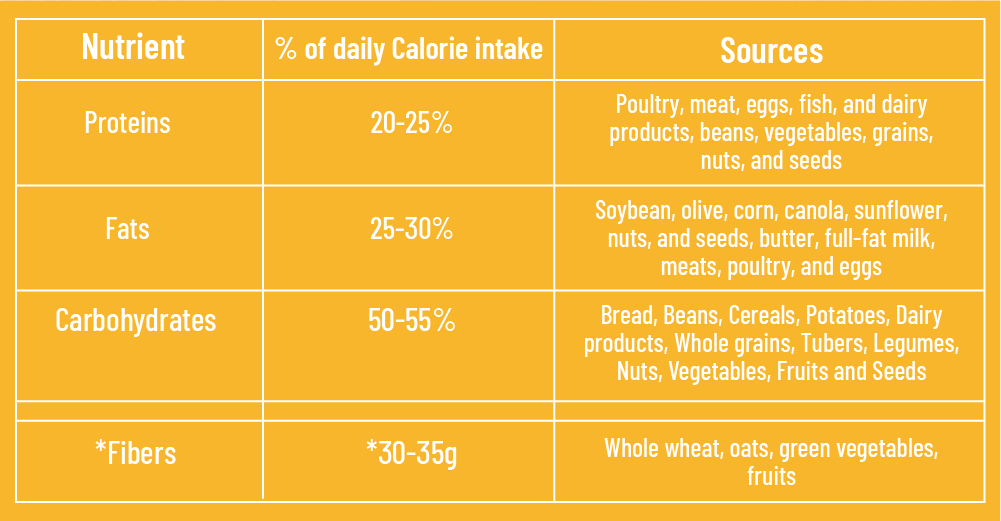
Are You Eating Right?

Ever heard the fairy tale of the three piglets? Each little piglet decided to build a house for himself, but each of them used different materials to construct their houses. One used straws and his house was ready in no time. The other piglet used thin sticks and he was able to get his house up too, pretty quickly. The last piglet used bricks, concrete and a little more time to build his house. One day, a hungry wolf came along and chose the piglets as his prey. The wolf used his strength and might and just blew the first two houses away. But when he came to the last piglet’s house, the wolf’s might was rendered powerless.
The moral of this story is that effort always brings in rewards. But that isn’t the only lesson from that fairy tale. The other one is

Your body is your house, your safe place. And the way you build it, the materials you use and the effort you put into it, decides how strong your body will turn out to be. That’s the name of the game. You are what you eat.
But what do we mean when we say you are what you eat? Does it mean that if you eat a piece of chicken, you will magically turn into a feathery, winged bird? Or if you eat an apple, you will become a shiny, luscious apple dangling from a tree? Not really. In fact, outright no.
What we’re getting at is that our body’s react differently to different types of foods. Food can be broken down into many components we call nutrients. This probably sounds like something from a school’s flashback, but everything we consume is made of proteins, carbohydrates, fats, minerals and vitamins in specific proportions. And each of these nutrients has a very specific role to play.
So let’s dive into what each of these nutrients has to offer to our body and how much of these nutrients you need for a healthy diet!
Proteins:
Proteins make up about 15% of our body’s total weight and essentially constitute our muscles. The thing about muscles is that they are constantly in motion and under duress. Think about it right now. You are scrolling through this article using the muscles in your fingers, we’re guessing your thumb. But that’s not all. You are able to see different parts of this article because of the muscles in your eye, directing your vision.
The point is that your muscles are constantly moving, and continuous movement of the muscles may lead to them slightly wearing out. But the body is pretty self sufficient at repairing them as long as it has proteins in it. Proteins are responsible for repairing any wear and tear of the muscles, rebuilding them to grow stronger. Other than that, they add an element of rigidity and stiffness to the body, lending structural support.
Simultaneously, proteins also act as carriers of vitamins and minerals that keep the immune system up and running.
Fats:
Ever seen the airbags that get deployed in a car upon impact, protecting the passengers in the car? Well, fats are like the airbags of our body, protecting the internal organs from any sudden jerks or shocks. Additionally, they also act like a layer of insulation, keeping the body warm.
But that’s not all fats are essential for. It is a common notion that fats are, in fact, deteriorating to health and should be avoided. However, that’s not the case. Absence of good fats in our diet and consequently our body means vitamins such as A, D, E, K, which are fat soluble vitamins, wouldn’t get absorbed by the body, leading to several diseases, caused by vitamin deficiency.
In addition, they are also a great source of energy, required for powering the body.
Carbohydrates:
Carbohydrates=instant energy. There is no inbetween. All those bursts of energy that you need for running, swimming, lifting weights…or anything strenuous…it mostly comes from carbohydrates. (depending on the intensity, of course)
Now all three macronutrients could be a source of energy for powering the body. But the human body is designed in such a way that carbs and fats are used first to generate energy before even having the opportunity to move to proteins. Essentially, carbs are the first line of defense, protecting the proteins stored in muscles which are used for tissue repair and rebuild. This literally means that carbs as well as fats ensure the preservation of the lean muscle mass of your body, sparing the activity of protein and conserving them for growth and development.
Micronutrients:
As the name suggests, these are the nutrients we get from food but are required in really miniscule amounts.
Vitamins are essential for biochemical reactions while they are also responsible for keeping the overall immune system on track. Minerals on the other hand are in charge of growth and repair, cell reactions, blood formation and much more.
But at the end of the day, we go back to what we mentioned before. Too much of something is just not always for the best. The nutrients, although enriching and enhancing to the body, can increase toxicity when consumed in excess. The best way to keep this in check is to follow a BALANCED DIET.
That’s the cardinal rule of staying healthy and fit. Our body responds to how it is treated and one way of treating it well is through a healthy, BALANCED diet.
Two words we might have heard a zillion times in every science class at school and most of us have definitely mugged down what a balanced diet is.
A balanced diet is one that has all the nutrients required to keep our bodies healthy, help it grow and keep it disease free. But that doesn’t mean you hoard up on all the healthy foods out there and just begin munching away without any control. The RIGHT AMOUNT of each food matters too!
So let’s try and see what a balanced diet looks like!
On an average, a person needs about 1500-2000 calories every day for sustenance and to carry out routine activities. But those calories should come in proportionately from different sources.

Micronutrients, the vitamins and minerals required by the body, also need to be consumed in proportion as shown in the tables below.
For vitamins…

For minerals…

All in all, knowing the components of food, how much of these components is required, what are their uses and where to get them from is the first step towards leading a healthy and essentially problem free life!
REF:
-
Eating a balanced diet – NHS
-
Centre for Health Protection – Nutrient Classifications
-
Total body protein: a new cellular level mass and distribution prediction model | The American Journal of Clinical Nutrition | Oxford Academic
-
5.2: The Functions of Fats – Medicine LibreTexts.
-
Nutrition for New Runners: Strategies to Make a Difference | Fitpage
-
Runner’s Diet | Johns Hopkins Medicine.
-
The Complete Runner’s Diet: What To Eat For Top Performance.
-
Protein: Everything You Need to Know | All About Protein | Fitpage
-
Fats: Why Are They an Essential Part of Your Diet | Fitpage
-
Micronutrients: Vitamins, Minerals and the Role They Play | Fitpage
-
Summary of Recommended Dietary (RDA) Allowance of selected nutrients for Indians, 2010














